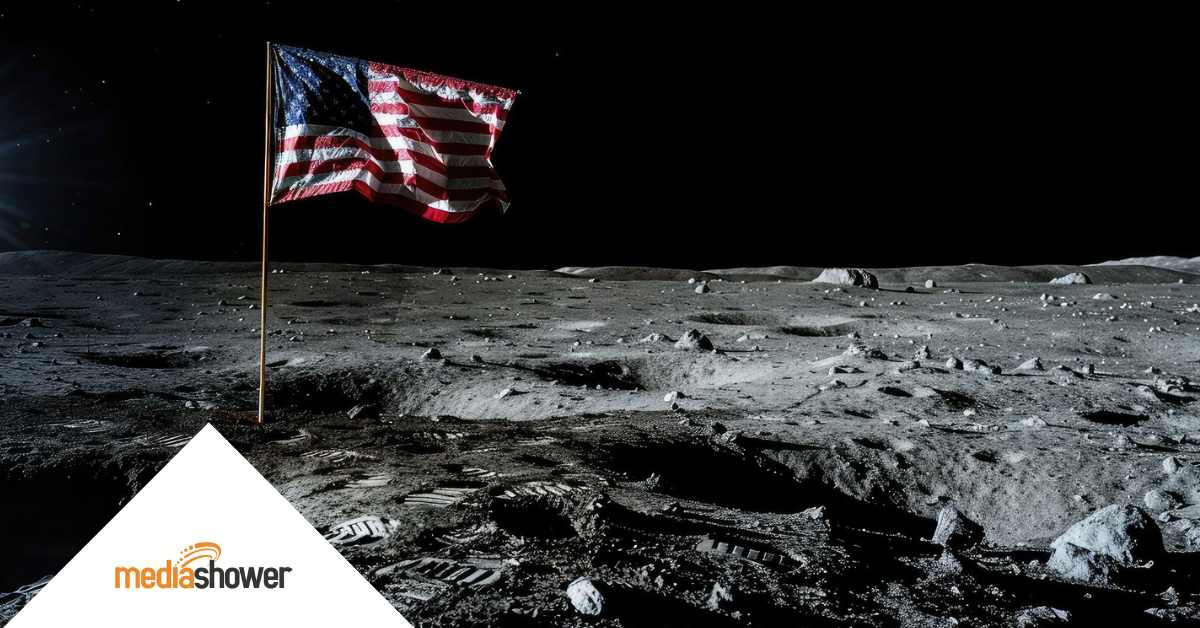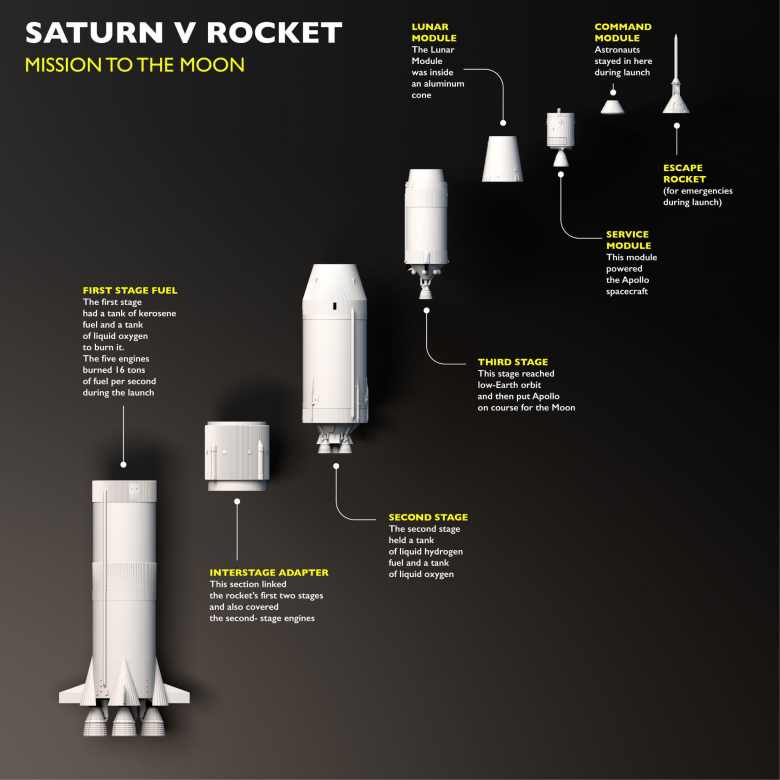
1962. At the height of the Cold War, amid intensifying nuclear threats, President John F. Kennedy set his sights on the moon.
As the two nations were on the brink of war, JFK took up the gauntlet the Soviet Union had thrown down with its manned space flights. He publicly pledged to put a man on the moon before the end of the decade.
To accomplish his goals, he needed to turn the tide of public opinion and galvanize support for the space effort. His focus on pushing the scientific frontier ultimately transformed the educational culture of the country, its economy, and its global standing.
Let’s break down this historic address to uncover JFK’s communication techniques that continue to teach us valuable lessons today, including:
- Setting ambitious targets to inspire action
- Appealing to patriotism to forge unity
- Addressing doubts to build credibility
- Using history to provide context and set examples
- Simplifying complex ideas through clear language and analogies
The Communication Techniques of JFK
“We choose to go to the moon in this decade and do the other things, not because they are easy, but because they are hard. Because that goal will serve to organize and measure the best of our energies and skills…”
According to astrophysicist and science communicator Neil DeGrasse Tyson, humanity’s greatest accomplishments have always had three drivers:
- The need to survive and not fall behind
- The prospect of gaining wealth
- The praise of a deity (which is no longer prevalent these days)
In his 1962 Rice University speech, JFK focused on the first two: America’s need to surpass the Soviet Union in the space race as an existential issue, and the prospect of “new knowledge to be gained and new rights to be won…”
The President also evoked planting the banner of freedom and peace on the frontier of science, instead of the hostile flag of conquest.
Set Ambitious Targets to Inspire
“We choose to go to the moon…because that challenge is one that we are willing to accept, one we are unwilling to postpone, and one which we intend to win…”
Ambitious objectives call for action. Kennedy’s bold declaration was a rallying cry to unite the nation. Through it, the President communicated a clear vision and purpose, setting a direction and course to achieving the goal.
JFK lent extra weight to the vision by being specific.
“…we shall send to the moon, 240,000 miles away from the control station in Houston, a giant rocket more than 300 feet tall, the length of this football field, made of new metal alloys, some of which have not yet been invented…”
 Kennedy’s description of the Saturn rocket was simple, yet accurate.
Kennedy’s description of the Saturn rocket was simple, yet accurate.
The President ensured that the audience understood the weight and scope of the challenge he proposed. He used carefully crafted comparisons throughout his speech to make its variables relatable and easier to comprehend.
When formulating a vision and purpose, modern leaders must ensure they are specific enough to allow people to comprehend them and assume psychological ownership.
Use Patriotism to Unify
“…this country of the United States was not built by those who waited and rested and wished to look behind them. This country was conquered by those who moved forward-and so will space.”
President Kennedy delivered his Rice University speech on September 12. A little over a month later, on October 16, the Cuban Missile Crisis would push the world to the brink of a global nuclear war.
Despite the specter of war, Kennedy focused his speech on the peaceful exploration of space, calling on the audience’s patriotism to avoid turning space into a battleground. The peaceful exploration of this new frontier depended on the United States winning the space race, he explained, linking the challenge to American values and history.
“Yet the vows of this Nation can only be fulfilled if we, in this Nation, are first, and, therefore, we intend to be first.”
Successful leaders recognize the significance of celebrating achievements. They know that by acknowledging accomplishments, they create a sense of unity and belonging. They base their visions on shared values, highlight success stories, and observe rituals and traditions.
Confront Doubts to Build Credibility
“To be sure, all this costs us all a good deal of money.”
Kennedy acknowledges the costs of space exploration, but doesn’t miss the opportunity to reframe the context of these costs.
“That budget now stands at $5,400 million a year – a staggering sum, though somewhat less than we pay for cigarettes and cigars every year.”
By playfully contradicting his previous statement, the President poses an unspoken question to the audience: are the potential rewards of space exploration not worth as much as the sustenance of a harmful and useless habit?
Confronting skepticism is doubly effective when coupled with a change of perspective that lends relatable support to the orator’s angle.
By acknowledging challenges and preparing for potential setbacks, communicators strengthen their authenticity. Good communicators secure the audience’s buy-in by introducing a fresh, relatable perspective that redefines the magnitude of the challenge.
Provide Historical Context to Underscore Potential
“William Bradford, speaking in 1630 of the founding of the Plymouth Bay Colony, said that all great and honorable actions are accompanied with great difficulties, and both must be enterprised and overcome with answerable courage.”
For a skilled communicator, history is always a source of motivation.
The President paints a condensed picture of the technological evolution of humanity to illustrate the place of space exploration in the grand scheme in relatable terms. He mentions the invention of writing and the wheel, insisting upon the accelerating nature of development.
JFK painted a historical background to the country’s space exploration efforts.
Situating current events in a historical context provides a better perspective of their true long-term significance. The exercise grants communicators the opportunity to add weight to the causes they argue by calling on well-known historical values.
Simplify Complex Ideas to Build Understanding
“The accuracy of that shot is comparable to firing a missile from Cape Canaveral and dropping it in this stadium between the 40-yard lines.”
Successful orators connect with everyone through simple language. Some speakers are masters of conjuring up vivid images in the minds of their audience through simple words, analogies, and comparisons. From JFK to Neil DeGrasse Tyson, people love such gifted communicators.
Translating complex ideas into simple, engaging language is a talent. It is a talent Kennedy had and used generously throughout his Rice University speech.
With humorous twists here and there, he painted an accurate picture of the space technology of the time, as well as of the ambitions of the space effort he was spearheading.
Communication Takeaways
JFK’s 1962 Rice University speech is one of the all-time great American speeches. It’s got effective communication techniques delivered throughout. Using simple, straightforward language, he engages and inspires a country around a wildly ambitious vision.
Kennedy shows us how to use historical context, national pride, a clear vision, and some humor to connect with audiences and win their support for a cause.
At Media Shower, we’ve helped over 500 global companies take their communication to the moon. If you’re ready to elevate your marketing efforts, click to get a free trial of our platform.